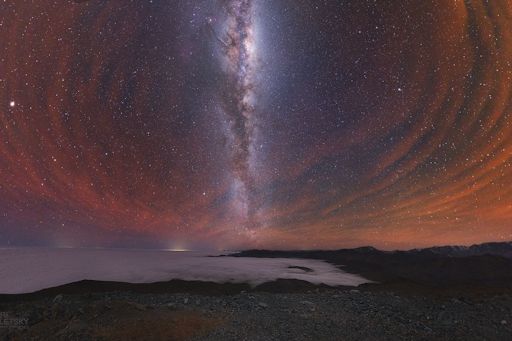On Sept. 1st, astrophotographer Yuri Beletsky hiked into the Atacama Desert of Chile for a deep exposure of the Milky Way. He got that and much more. "There was a stunning display of red airglow," he says. It surrounded the Milky Way like a celestial bulls-eye:

Airglow is aurora-like phenomenon caused by chemical reactions in the upper atmosphere. Human eyes seldom notice the faint glow, but It can be photographed on almost any clear dark night, anywhere in the world.
The curious thing about Beletsky's photo is not the presence of airglow, but ratherits color--red. Airglow is usually green, the color of light from oxygen atoms some 90 km to 100 km above Earth's surface. Where does the red come from? Instead of oxygen, OH can produce the required color. These neutral molecules (not to be confused with the OH- ion found in aqueous solutions) exist in a thin layer 85 km high where gravity waves impress the red glow with a dramatic rippling structure.
"It was a truly special night," says Beletsky. "Pure tranquility."
Bron:http://www.spaceweather.com/ | Gewijzigd: 1 februari 2017, 13:17 uur, door Joyce.s

 De melkweg omgeven door een rode luchtgloed
De melkweg omgeven door een rode luchtgloed




